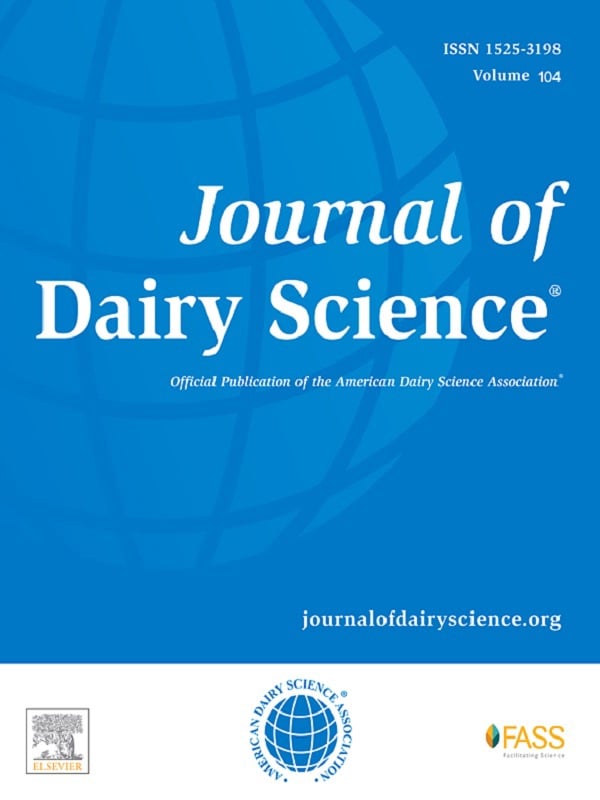Effect of partial exchange of lactose with fat in milk replacer on ad libitum feed intake and performance in dairy calves
By Juanita Echeverry-Munera,1 Leonel N. Leal,2* Juliette N. Wilms,1,2 Harma Berends,2 Joao H. C. Costa,3 Michael Steele,1* and Javier Martín-Tereso2
1 Department of Animal Biosciences, University of Guelph, Guelph, ON, Canada N1G 2W1
2 Trouw Nutrition R&D, PO Box 299, 3800 AG, Amersfoort, the Netherlands
3 Department of Animal and Food Sciences, University of Kentucky, Lexington 40546
- Ruminants
- Dairy
- 2021
- Open Access
J. Dairy Sci. 104 https://doi.org/10.3168/jds.2020-19485
L. N. Leal, J. N. Wilms, H. Berends, Joao H. C. Costa, M.A. Steele, J. Martín-Tereso

ABSTRACT
Compared with Holstein whole milk, commercial milk replacers (MR) for calves deliver relatively high levels of lactose and low levels of fat, and protein levels are rather comparable, resulting in a lower energy density and energy-to-protein ratio of the diet. Thus, the objective of this study was to determine the effects of partially exchanging lactose with fat in MR on voluntary feed intake, growth performance, and feeding behavior. Thirty-two male Holstein calves (2.1 ± 0.16 d of age, 46.4 ± 0.77 kg of body weight; BW) were assigned to 16 blocks of 2 calves per block based on arrival date and serum IgG. Within each block, calves were randomly assigned to 2 treatments: a high-lactose MR (HL; 17% fat; 44% lactose), or a high-fat MR (HF; 23% fat; 37% lactose). Lactose was exchanged by fat on a weight per weight basis, resulting in a 6% difference in metabolizable energy density per kilogram of MR. The experiment was divided into 3 phases: preweaning (P1; 0–35 d), weaning (P2; 36–56 d), and postweaning (P3; 57–84 d). For the first 2 wk of P1, calves were individually housed, fed their respective MR ad libitum through teat buckets, and provided access to water. At 14.2 ± 0.5 d of age, calves were group-housed (4 blocks/pen, 8 calves) and housed in group pens for the remainder of the study. In the group pens, calves were fed ad libitum MR, starter feed, chopped wheat straw, and water via automated feeders. During P2, calves were gradually weaned until complete milk withdrawal by 57 d and then monitored until 84 d (P3). Measurements included daily intakes and feeding behavior (rewarded and unrewarded visits), weekly BW and body measurements, and biweekly blood samples. Increasing fat content at the expense of lactose decreased MR intake during P1 by 15% (HL = 1.32 ± 0.04; HF = 1.17 ± 0.04 kg of dry matter per day), whereas total starter intake was not affected by MR composition. Once MR was restricted during P2, HL calves were reported to have more unrewarded visits to the automatic milk feeder than HF calves (11.9 ± 0.95 vs. 8.4 ± 1.03 visits/d, respectively). Crude protein intake was higher for HL calves during P1 (352.1 ± 11.2 vs. 319.6 ± 11.6 g/d), which was attributed to the higher intake of MR during that period, and metabolizable energy intake and protein-to-energy ratio remained comparable between treatments. Plasma cholesterol and nonesterified fatty acids levels were higher in HF calves as a consequence of the diet. Nevertheless, final BW (84 d) did not differ between treatments. Overall, calves fed ad libitum seemed to regulate their intake of MR based on its energy density, without significant effects on solid feed intake and overall growth.